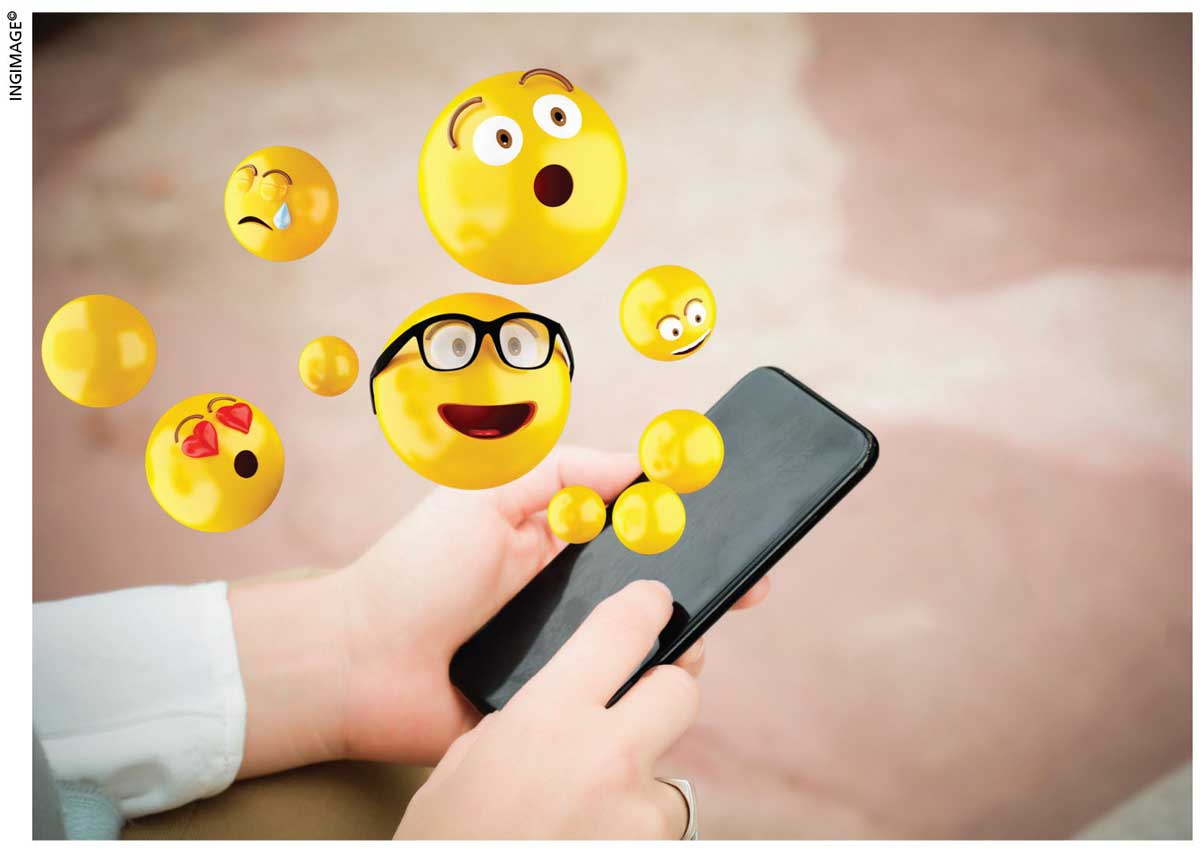GRAPHIC COMMUNICATION
NOW PICTURES ARE TALKING
Ruwandi Perera is quite lost for words in the expressive world of emojis

Humans have always acknowledged that there is more to language than words and phrases. Nonverbal communication such as body language, gestures, facial expressions, signs and symbols have at times proven to be far more effective than words.
This love for semiotics can be traced back to Stone Age cave paintings, Egyptian hieroglyphs and geometric patterns in the Peruvian desert. This latest evolution is none other than a new-age pictographic language: emojis.
Emojis have now become commonplace – especially among millennials and Gen Z – and are replacing words, as well as revolutionising the way in which we communicate. In fact, the Oxford English Dictionary named the ‘face with tears of joy’ emoji as 2015’s ‘word of the year.’
The predecessor to emojis is probably the emoticon. While an emoji is a cartoonish character, an emoticon is a text based symbol that uses letters, numbers and punctuation marks such as 🙂 and 🙁 to make a point.
Emoticons were popular back when we were careful about how many characters to use in text messages and were happy to read them sideways thanks to the limits of keyboards. Yet, with online communication available today at a fraction of the cost of what it was, emoticons have died a natural death and emojis have taken the spotlight!
Emojis now cover facial expressions, objects, locations, animals, food, climate related information and more. Notable new emojis include ‘trolls,’ ‘biting lip,’ ‘saluting face,’ ‘melting face,’ ‘peeking eye,’ ‘finger hearts,’ ‘pregnant man’ and ‘lotus.’
These expressions are flooding both social media and emails. The ‘crying with laughter’ emoji is the most used on Twitter and Facebook while Instagram users prefer the ‘heart.’
When a world renowned South Korean boy band celebrated its ninth anniversary, Twitter launched a custom grey ‘BTS symbol’ emoji for fans to join in the fun. There were also many emojis trending during the 2022 Indian Premier League (IPL 15) – most tweets included the ‘lion’ emoji when referring to the Chennai Super Kings while the ‘fire’ and ‘laughing with tears’ emojis flooded conversations in general.
There’s even a World Emoji Awards – an annual event hosted by Emojipedia on 17 July – with accolades such as ‘Most Popular New Emoji,’ ‘Most Anticipated Emoji’ and lifetime achievement awards for the most used emoji of all time.
It’s not only one-on-one conversations or social media posts that use emojis. These cartoon characters have been embraced by the corporate world as well. They’re also used in many workplace communications to help team members engage and show empathy.
With Zoom, Microsoft Teams and Google Meet replacing boardroom discussions and in-person staff meetings, many offices have begun kickstarting proceedings by inviting members to share their statuses through emojis. Instead of pats on the back, many business leaders now opt to use the ‘applause’ emoji to recognise people’s achievements.
So why are we switching from words to emojis in our conversations? Perhaps it’s due to the isolated lives we lead today, which have been exacerbated by the pandemic; or maybe it is the evolution of language itself to aid easier communication.
Many people feel more comfortable using emojis rather than talking on the phone or in person since they offer a safer way to display emotions that would otherwise remain unexpressed. Emojis have broken the invisible barriers between people and given us a chance to express our feelings without fear of being too exposed.
In the realms of online dating emojis are proving to be lifesavers. They fill in the gaps left by digital communications – such as not being able to read body language or facial cues. Sometimes, an emoji with a funny face can be used to answer a tough or embarrassing question while a sad countenance may be perfect to console someone by showing empathy.
Emoji literacy is becoming a new skill to master since many of us still don’t know what each emoji is supposed to mean exactly. For instance, the ‘slightly smiling face’ emoji can be understood to be a passive aggressive message, irony or uncertainty. And the emoji with two hands pressed together is interpreted by some to be gratitude and others to be a request for a favour or even prayer.
But emojis are also found to have darker uses. Teenagers in the US have been using emojis to buy narcotics from dealers on social media platforms by using specific sequences of these communication cartoons.
There are always so many sides to everything and emojis are no exception. However, one thing’s for certain – they’re here to stay!



